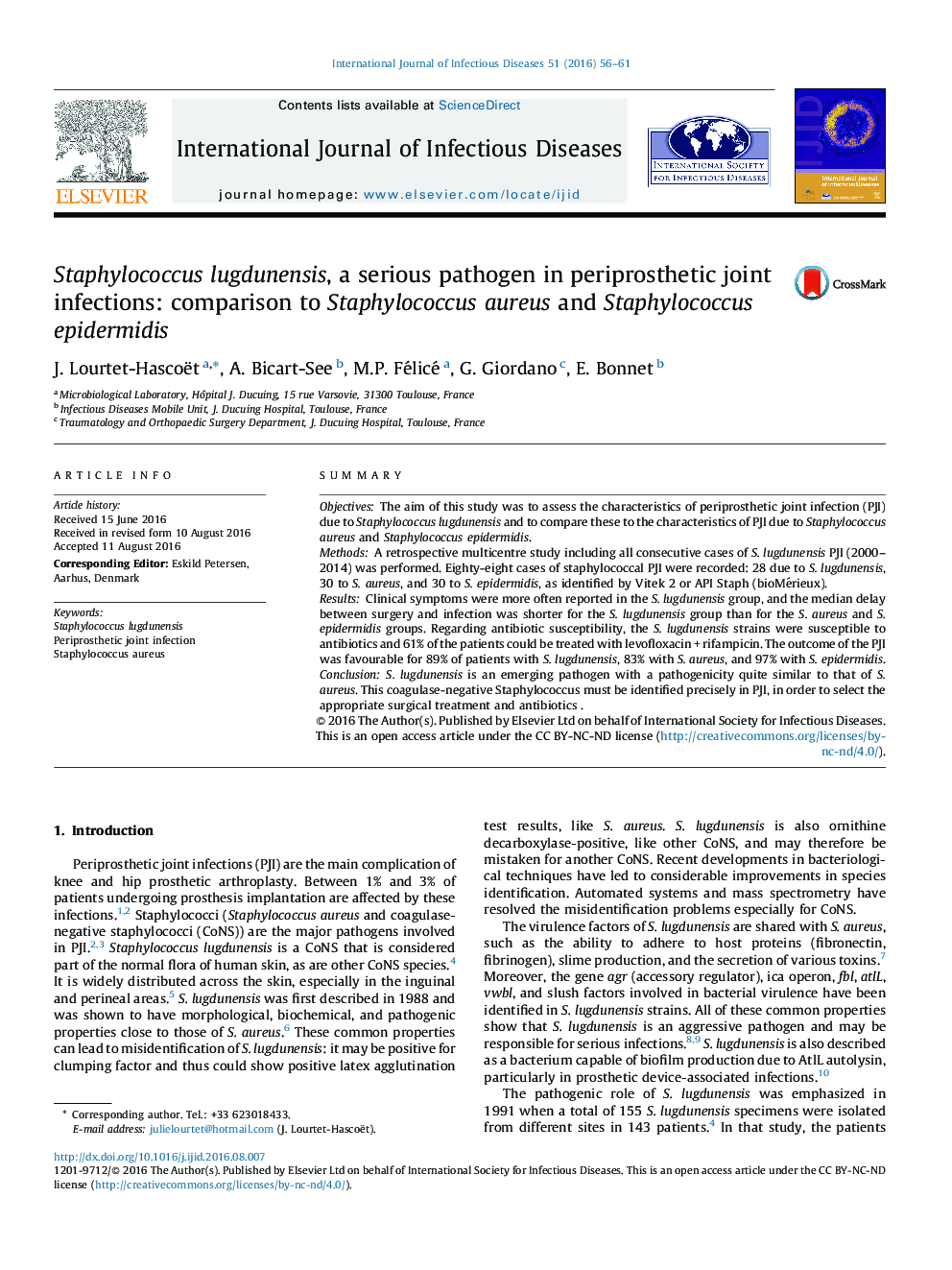| Article ID | Journal | Published Year | Pages | File Type |
|---|---|---|---|---|
| 3361580 | International Journal of Infectious Diseases | 2016 | 6 Pages |
SummaryObjectivesThe aim of this study was to assess the characteristics of periprosthetic joint infection (PJI) due to Staphylococcus lugdunensis and to compare these to the characteristics of PJI due to Staphylococcus aureus and Staphylococcus epidermidis.MethodsA retrospective multicentre study including all consecutive cases of S. lugdunensis PJI (2000–2014) was performed. Eighty-eight cases of staphylococcal PJI were recorded: 28 due to S. lugdunensis, 30 to S. aureus, and 30 to S. epidermidis, as identified by Vitek 2 or API Staph (bioMérieux).ResultsClinical symptoms were more often reported in the S. lugdunensis group, and the median delay between surgery and infection was shorter for the S. lugdunensis group than for the S. aureus and S. epidermidis groups. Regarding antibiotic susceptibility, the S. lugdunensis strains were susceptible to antibiotics and 61% of the patients could be treated with levofloxacin + rifampicin. The outcome of the PJI was favourable for 89% of patients with S. lugdunensis, 83% with S. aureus, and 97% with S. epidermidis.ConclusionS. lugdunensis is an emerging pathogen with a pathogenicity quite similar to that of S. aureus. This coagulase-negative Staphylococcus must be identified precisely in PJI, in order to select the appropriate surgical treatment and antibiotics .
